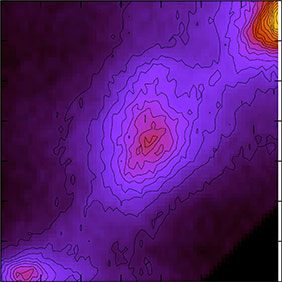X-ray spectra of transition-metal catalysts

Solar fuel systems store solar energy in chemical bonds by formation of e.g., hydrogen or methanol. Development of better catalysts requires knowledge about electronic structure. Transition metal complexes are often probed by UV/Vis spectroscopy, but in a solar fuel system the catalyst is coupled to one or more chromophores designed to absorb strongly in the UV/Vis region. In principle, this limitation can be overcome using X-ray spectroscopy, but the challenges have been to:
- Obtain spectra with sufficiently high resolution (<0.1 eV) so that the main electronic transitions can be observed.
- Interpret the information content of the X-ray spectra.
Recent progress in instrumentation, and the use of resonant inelastic X-ray scattering (RIXS) to circumvent the energy-time uncertainty principle, show that the first challenge can be overcome. With the development of high-brilliance X-ray sources; synchrotron lightsources like Max IV and potentially free-electron lasers, these techniques can be applied also to proteins, solution catalysts and other low-concentration samples.
The experimental developments call for matching progress in the modeling of X-ray spectra. Transition metal catalysts require methods that correctly describe the multiplet effects that shape the high-resolution spectra, and that can also be applied to non-symmetric systems. The specific aims of the current project are therefore to:
- Develop a theoretical approach, based on multiconfigurational wavefunction theory, to qualitatively describe high-resolution X-ray spectra of transition metals.
- Use this approach to analyze the electronic structure of water oxidation catalysts.
This modeling approach will be able to describe a range of X-ray processes, including time-resolved experiments, which can make it an important tool in the expanding field of X-ray science.
Parts of the project are supported by the Consortium for Theoretical X-ray Science (CoTXS), a collaboration between seven research groups at KTH, Linköping University, Stockholm University and Uppsala University. CoTXS is financed by the Knut and Alice Wallenberg foundation.
